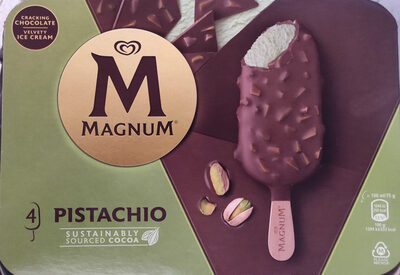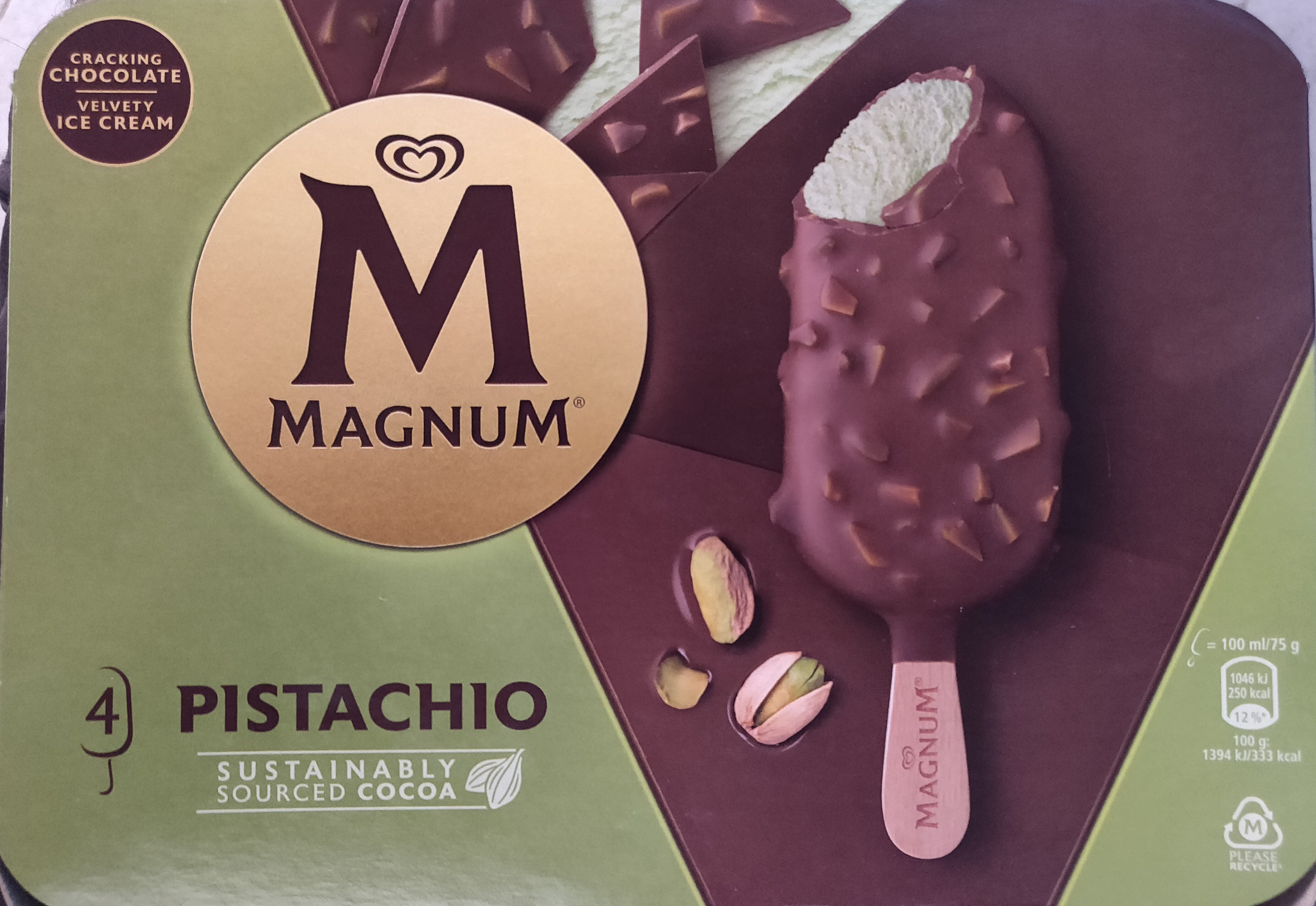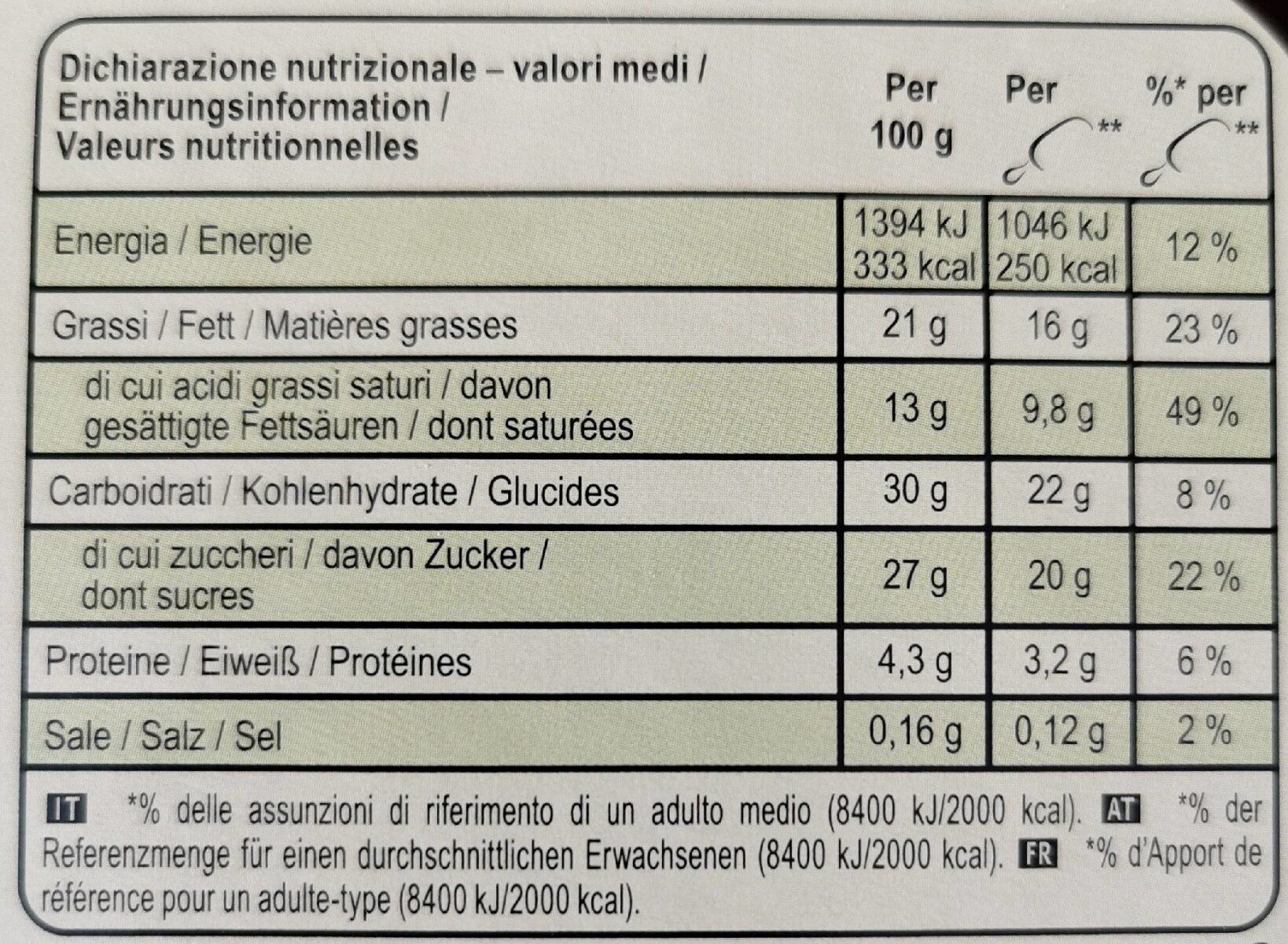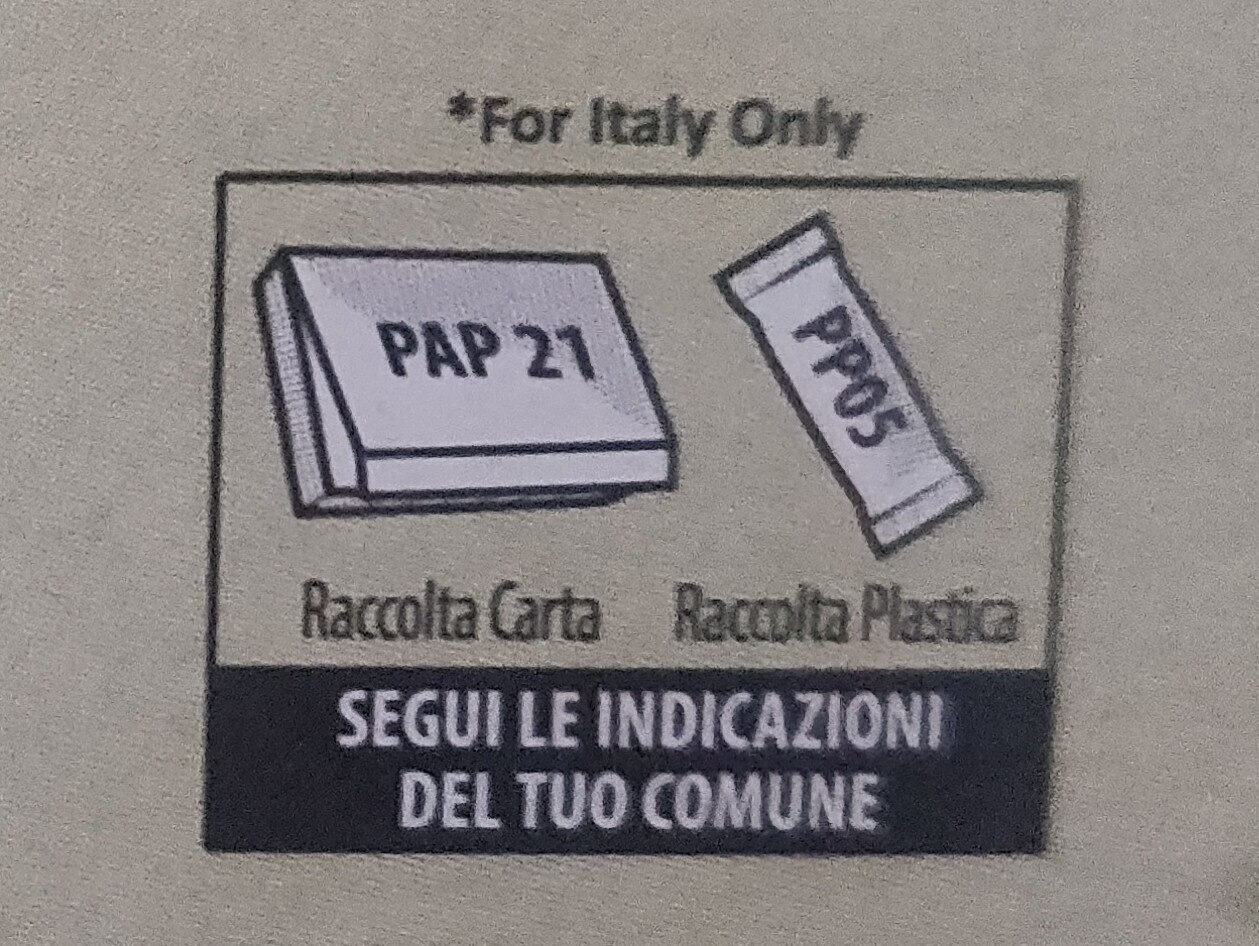Pistachio gelato al gusto di pistacchio - Magnum - 300 g
This product page is not complete. You can help to complete it by editing it and adding more data from the photos we have, or by taking more photos using the app for Android or iPhone/iPad. Thank you!
×
Some of the data for this product has been provided directly by the manufacturer Unilever France.
Barcode: 8711327391888 (EAN / EAN-13)
Common name: Glace parfum pistache (avec 3% de pâte de pistache), enrobée de chocolat au lait (30%) et de morceaux de pistaches (3%).
Quantity: 300 g
Packaging: Plastic, Box, Film, Pp-polypropylene, Non-corrugated cardboard
Brands: Magnum
Categories: Desserts, Frozen foods, Frozen desserts, Ice creams and sorbets, Ice creams, Ice cream bars
Labels, certifications, awards:
Rainforest Alliance
Origin of the product and/or its ingredients: Allemagne
Link to the product page on the official site of the producer: http://www.dettofranoi.it
Stores: Bennet
Matching with your preferences
Other information
Preparation: Pour une dégustation encore plus onctueuse de votre crème glacée, sortez-le quelques minutes avant de servir.
Conservation conditions: À conserver entre -25°C et -18°C
Customer service: Magnum Relation Consommateurs, Unilever France, 20 rue des Deux Gares 92842 Rueil-Malmaison Cedex
Report a problem
Data sources
The manufacturer Unilever France uses Equadis to automatically transmit data and photos for its products.
Product added on by kiliweb
Last edit of product page on by org-unilever-france-gms.
Product page also edited by ecoscore-impact-estimator, harragastudios, inf, nur, openfoodfacts-contributors, packbot, roboto-app, telperion87, yuka.VFlRU1Rid09uT1U2cDgwTTcwdisyZGwrbTZHWUFrem5lODBESVE9PQ.














